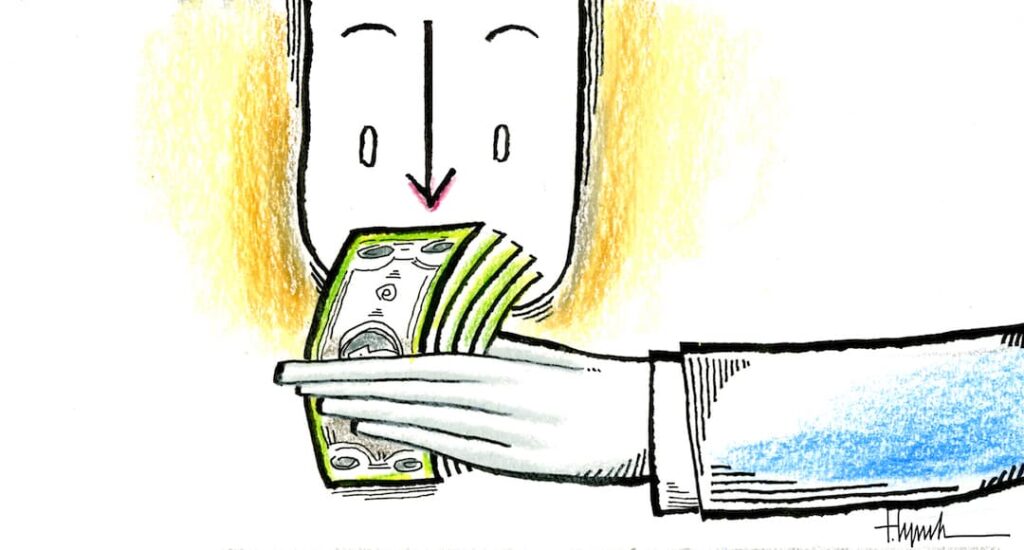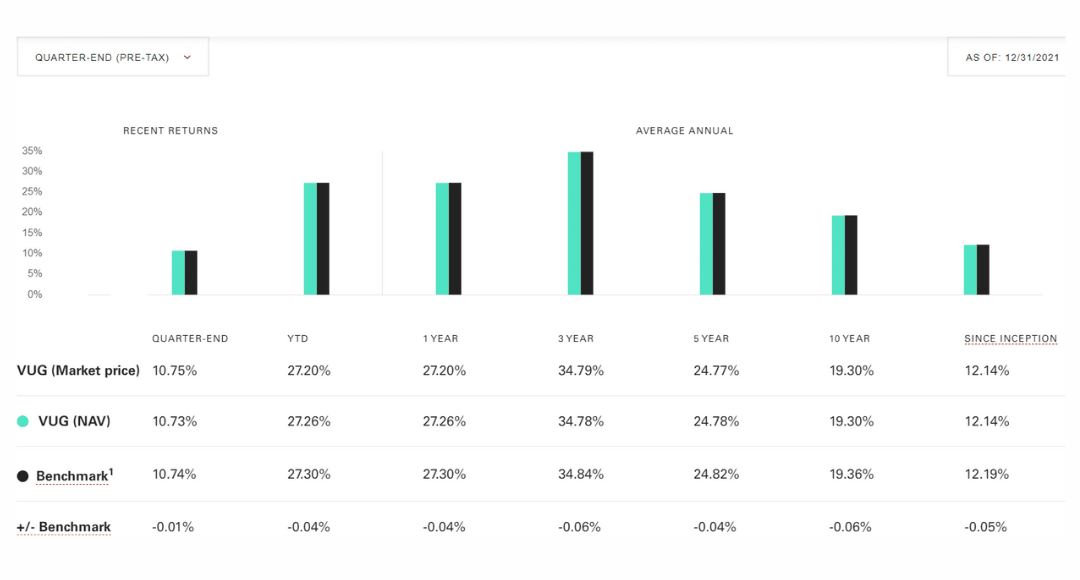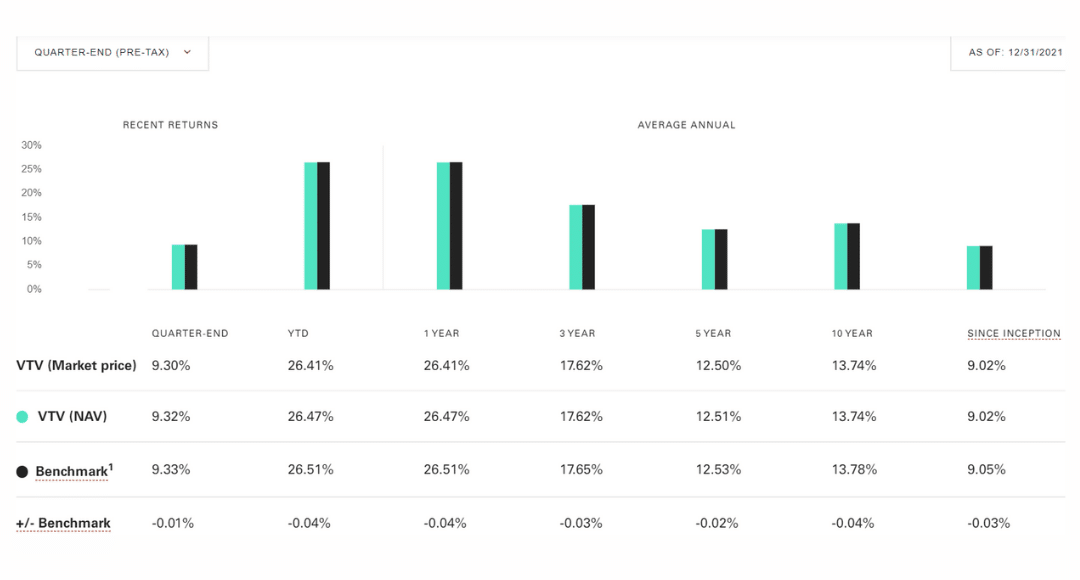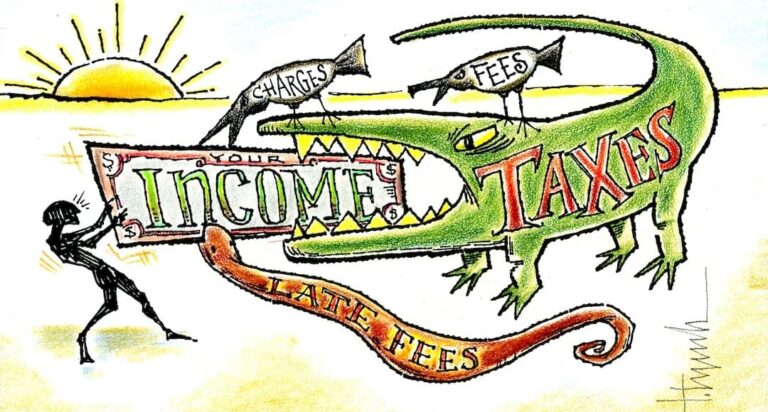
Wild swings in the stock market are unsettling in the best of times but can be downright terrifying when you add horrible inflation. At Golden Road Advisors, we have had a lot of discussions with clients about inflation and the stock market, so I knew it was time to share those insights here as well. Knowledge is power, and growing more knowledgeable about the effect of inflation on the stock market should help you avoid making rash decisions, even when you are feeling uneasy.
However, before I explain how the stock market and inflation intersect (and offer suggestions), let’s make sure we understand the baseline terms.
Understanding Inflation
Inflation is a function of supply and demand. When there is a lot of demand (money) relative to the supply of goods and services, prices go up, and the value of your money goes down, diminishing your purchasing power.
Some inflation is normal, even desirable because it signifies a healthy economy. For example, the U.S. Federal Reserve targets a 2% rate of inflation over the long run. A healthy economy suggests that the goods and services we need will be affordable in the future, giving consumers the confidence they need to continue spending.
Inflation becomes problematic when prices go up too fast. That is because psychology enters the supply and demand equation, causing discomfort among consumers who become unsure if they should spend money.
Initially, inflation can cause some consumers to buy more (to take advantage of current pricing before it rises further), contributing to higher inflation. But as the condition persists, people delay spending on big expenses like vacations and home improvements because they worry that they won’t be able to afford things in the future. Reduced spending can lead to a recession.
The Flip Side of the Coin

It is worth noting that the balance can also swing the other way. If goods and services are abundant compared to demand, it will put downward pressure on prices, causing “deflation.” That also makes consumers anxious, but now they delay spending in anticipation of a better deal, which forces prices down further. Deflation contributed to the pain of the Great Depression.
Financial Planning Implications
Periods of higher inflation are especially disturbing when planning for our futures. For example, if a couple retires at 65, at least one of them is likely to live another 25 or 30 years. At 2.5% inflation, the cost of living will double in their retirement, and ideally, they plan for that as a necessary part of retirement savings projections. However, higher than expected inflation suggests they must either save more or achieve higher growth to reach their goals.
Therefore, it’s unsettling to experience higher prices combined with a volatile stock market because it’s tough to feel confident in achieving your goals when the starting and finish lines get pushed back. That’s why it is crucial to examine the trends and choose assets that have outpaced inflation over time when making long-term investment decisions. That creates a buffer against the unknown.
What Does Inflation Do to the Stock Market?
There are many factors impacting the stock market at any time, making a stock market vs. inflation comparison difficult. That said, inflation and stock market volatility often go hand in hand, at least in the short run.
When inflation occurs, the markets typically go down as people adjust to the new economic condition. Then, panic sellers join the party, which brings the market down further.
Stocks deemed riskier usually suffer more. For example, growth stocks often do worse than value stocks when inflation sets in. That could be due to 2 main factors;
- When inflation appears, higher interest rates typically follow, and
- As interest rates rise, the rate of return investors can receive in lower-risk investments becomes more attractive.
These conditions can trigger a “rotation” where investors sell risky stocks and buy more stable ones. We saw that happening in early 2022, creating a significant disparity between growth and value stock returns.
Examples
An example of a growth stock would be Tesla (down 27.42%) from January-April 2022). Tesla’s stock price mainly reflects the potential investors see in the company’s ability to grow earnings. However, as inflation comes into play and economic conditions become less certain, some investors become less patient with potential and move their money into companies with more stable earnings.
Berkshire Hathaway (up 6.61% from January-April 2022) is an example of a value stock. Its stock price primarily reflects the existing earnings of the company. Value companies like Berkshire Hathaway are boring in times of low inflation and low-interest rates, while growth companies are all the rage. When the balance flips, however, the opposite occurs.
We have seen this play out in the performance of growth stocks, which have trounced value stocks in the past ten years. For instance, in the ten years ending December 31, 2021, Vanguard’s Growth ETF (VUG) was up 19.30% annualized, while Vanguard’s Value ETF (VTV) trailed behind at 13.74%.


Please Note: The information contained above is for illustrative purposes only.
How Do Financial Professionals Protect Clients In Times of Inflation?
So, what can we do about it? Well, this is where it gets interesting (or really boring, depending on if you view investments as a practical necessity or a source of entertainment).
You have probably heard of investment managers selling stocks to buy bonds or engaging in “sector rotation.” Sector rotation means moving funds from one sector to another as conditions change, like technology to utilities, industrials, or healthcare.
Like most portfolio management strategies, sector rotation has merit, but we see such activity as mostly another form of market timing. Attempting to time the market usually leads to lower returns, increased trading costs, and increased taxes. In other words, tactical changes in response to market conditions mean you must make more decisions and risk mistakes. When it comes to portfolio management, we think limiting the number of decisions reduces risk and results in better financial outcomes.
That is one of the differences between working with someone who is purely an investment manager vs. a holistic financial planner. A holistic financial planner thinks strategically (in terms of how a potential decision will impact your long-term financial outcome) and typically avoids “tactical” moves unless they are likely to be advantageous in the big picture of your holistic financial plan. We expect this practical approach to result in higher returns, lower fees, and lower taxes in the long run.
An Example of How This Plays Out in the Real World

We have a client that independently manages an investment account containing all growth stocks. Instead of competing with those investments, we looked at his overall household allocation and built around it. The funds we manage for him are value tilted, so the portion of the portfolio representing his “picks” sometimes outperforms our “picks.” Yet, he understands and appreciates the balance and has benefited from this strategy.
Our strategy to build around a client’s holdings also applies to executives whose company stock takes up an outsized share of their portfolio. And it’s why taking a holistic approach to your financial planning is critical. When we step back and look at the complete picture of a client’s finances, we can work around whatever financial situation they have created.
What is the Philosophy Behind This Approach?
In our view, it is always best to stay diversified and keep an eye on your allocation when segments of the market experience outsized runups (i.e., the growth of the last decade).
When runups occur, they can throw your holdings out of balance, leaving you exposed when things turn south. So it is wise to reallocate funds periodically to reduce risk. For instance, you might sell growth stocks to buy value stocks or reduce unhealthy concentrations. Just be careful to do so proactively vs. responding to the latest news about the S&P 500 index.
One critical thing to remember with stock market investing is what you own. The stock market is a public marketplace where you can purchase and sell companies or (more accurately) shares of companies. So it isn’t realistic to expect a quick win, similar to how you wouldn’t expect the value of your home to go up overnight. To realize a return on your investment, you must plan to own companies for a very long time.
Short-term trading in the stock market is a byproduct of a public market and something to which long-term investors must remain indifferent.
Great companies have great products that people want and need. In an inflationary environment, these companies hold pricing power. When their costs increase, they can pass those expenses to the consumer to maintain profitability. Naturally, there is a limit to how much inflation consumers can bear (can you imagine paying $12 for a Flat White at Starbucks?), but we don’t seem to have reached it yet. Therefore, stocks are an inflation hedge.
Inflation and the Stock Market: The Bottom Line
Periods of high inflation occur when too much demand exists relative to the goods and services available. This environment often creates a ripple effect in the stock market because consumers change their spending habits and shift their savings into “safer” investments – creating an inflation vs. stock market phenomenon.
A holistic financial plan coupled with a strategically allocated portfolio can help protect you from mistakes during inevitable times of turbulence. So, it is vital to look at your finances holistically and adopt a long-term view. A knee-jerk response to volatility only exposes you to unnecessary costs and risk. Instead, treat stocks as a proper investment that has the potential to outpace inflation over time.
To learn more about our approach, we encourage you to read our blog post titled “What is Holistic Financial Planning” or visit our “why” page.
The views expressed in this commentary are subject to change based on market and other conditions. These documents may contain certain statements that may be deemed forward-looking statements. Please note that any such statements are not guarantees of any future performance and actual results or developments may differ materially from those projected. Any projections, market outlooks, or estimates are based upon certain assumptions and should not be construed as indicative of actual events that will occur.
Author
-

Kevin Caldwell is a principal at Golden Road Advisors and a CERTIFIED FINANCIAL PLANNER™ (CFP®️) practitioner with over 15 years of experience in the financial services industry. In addition to providing advice and guidance to clients, he regularly contributes to publications such as Kiplinger, Yahoo! Finance, Dalbar, and MarketWatch.



